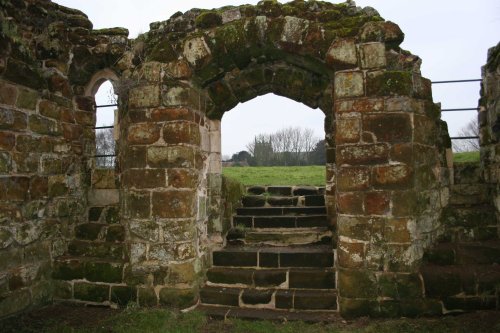Please login or click here to join.
Forgot Password? Click Here to reset pasword

Don't get me wrong, I'm well aware that living in 2008 has got its advantages. After all, I spend much of my time tapping away at a computer and frequently use other benefits of modern technology. If the wind's in the right direction I can even remember my bank account PINs (although the accounts they open are usually in the red).
Even so, there's something in me that hankers after a simpler life. A life lived in a less hectic environment, and conducted at a more comfortable pace. Had I arrived on this planet a few centuries before email, before the Internet, before the very first telephone rang for the very first time, I think I'd have been just fine.
I know all of this because old churches, crumbling castles and other ancient buildings have such an effect on me. Whenever I visit one (especially if it's a romantic-looking ruin) I get a powerful sense of being surrounded by the past - and a strong feeling that, at least for a while, life really doesn't need to be quite so frantic.
That calmer perspective is valuable, and it's one of the reasons I like to see old monuments preserved. I was reminded of that when I visited Bolingbroke Castle.
The Home By The Brook Of Bulla's People
Bolingbroke Castle can be found in Old Bolingbroke, a pleasant village that lies between Spilsby and Horncastle. Apparently the name 'Bolingbroke' is Saxon and means 'the home by the brook of Bulla's people'. The village is mentioned in the Domesday Book, where we learn it had a church, three mills, a market and a yearly fair. When a medieval castle was built it became rather more important, and more important still when King Henry IV was born there in 1366.
The castle was founded by The Earl of Chester nearly 800 years ago - the earliest recorded reference to it is in 1232 - and although crumbling walls are now all that remain, it must have been an impressive-looking place in its day. As the information boards placed around the site will tell you, it boasted five towers and a gate house, and was surrounded by a curtain wall twelve feet thick. The curtain wall was in turn surrounded by a deep moat.
These impressive defences were tested in 1643, during the English Civil War, and in 1652 they were deliberately weakened by Cromwell's forces to make the place less useful to the Royalists. Over the years more and more of Bolingbroke Castle was damaged or buried, until by 1900 there was little left to see. However, in the 1960s the Ministry of Works excavated the site and unearthed the substantial remains that visitors can enjoy today.
I spent a pleasant hour or so exploring the place, and there really is a sense of timeless calm to be found amongst these ruins. Pay Bolingbroke a visit - admission is free - and soak up some of that atmosphere.
Pictures of Bolingbroke Castle..
Find a hotel near Bolingbroke Castle..
Submit pictures of Bolingbroke Castle
| Article Title | Author | Date |
| Stonehenge | David Coe | 23rd January 2024 |
| Derwent Dam: A Historic Icon in the Heart of Derbyshire | David Coe | 14th January 2024 |
| The Native Trees of England: A Botanical Tapestry | David Coe | 15th December 2023 |
| Stoke-on-Trent: The Potteries Hub | David Coe | 12th December 2023 |
| England's 'Heritage at Risk Register' 2023 | David Coe | 11th December 2023 |
| 10 of the prettiest villages in the Lake District, Cumbria | poe | 16th March 2023 |
| Where to see Daffodil Displays in the South West of England | poe | 3rd March 2023 |
| 10 Famous Landmarks in Dorset | poe | 1st March 2023 |
| List of popular Dorset market towns including market day | poe | 1st March 2023 |
| 10 Best Historic Attractions to visit in York, England | poe | 16th May 2022 |